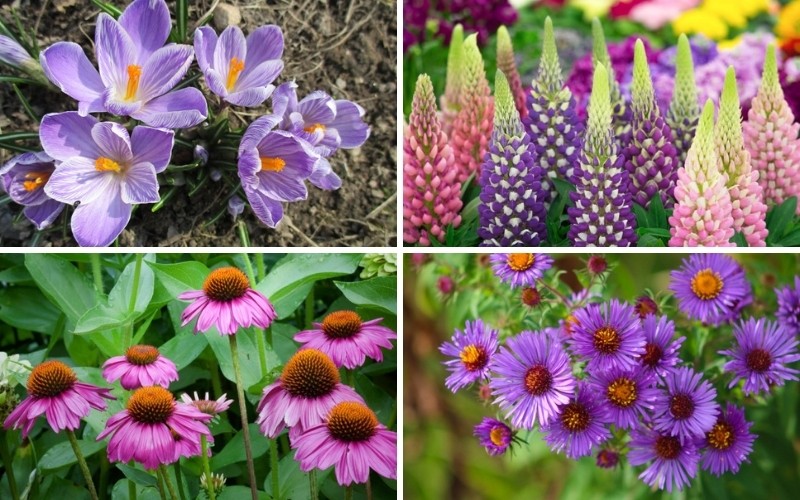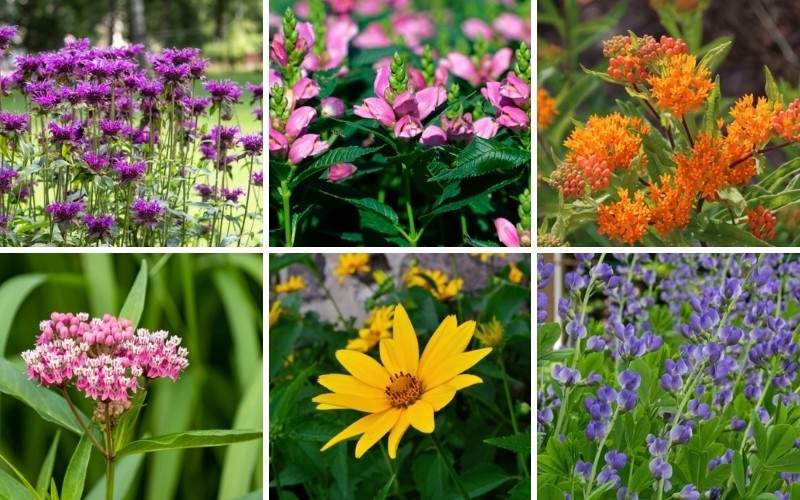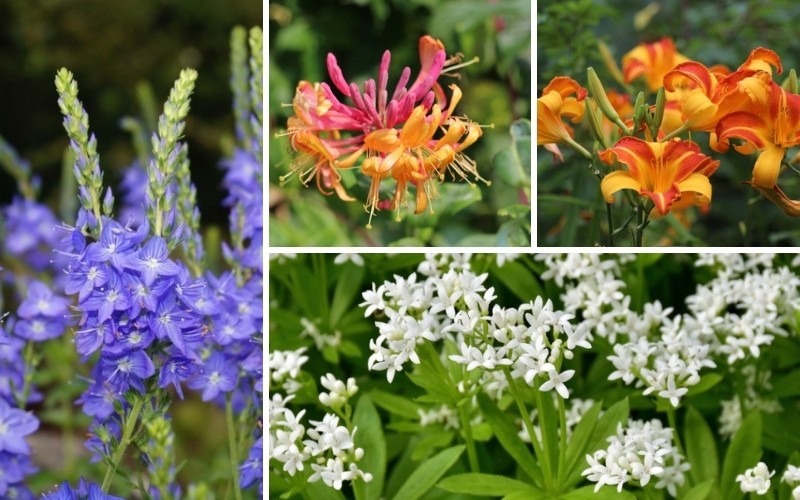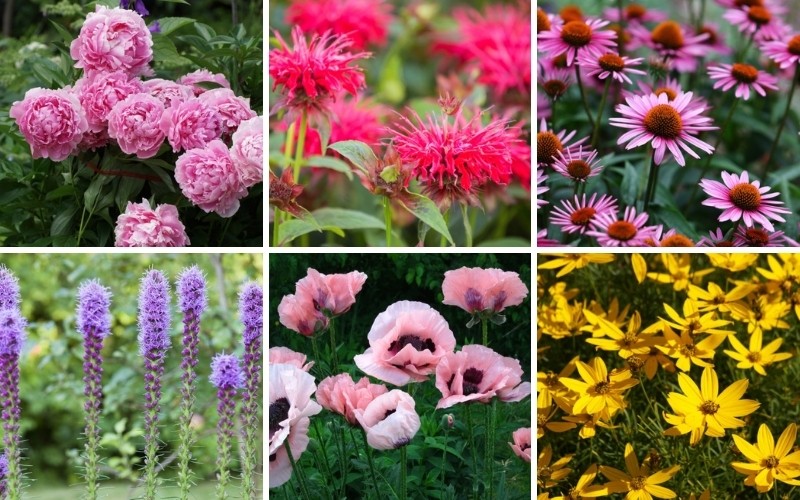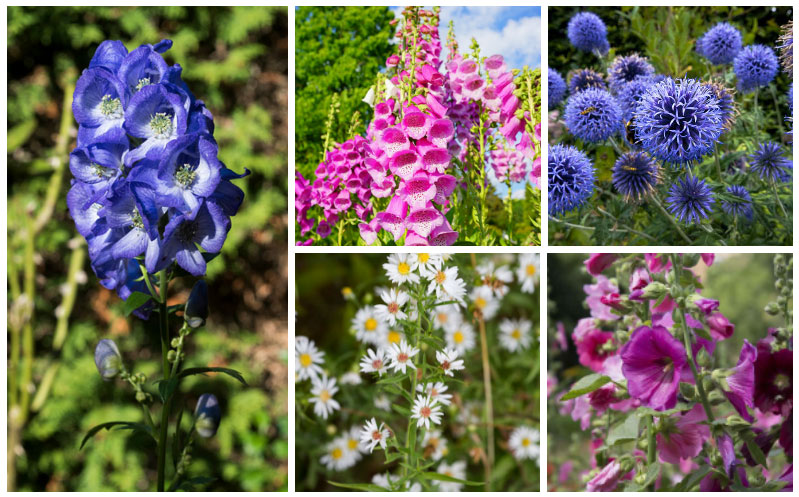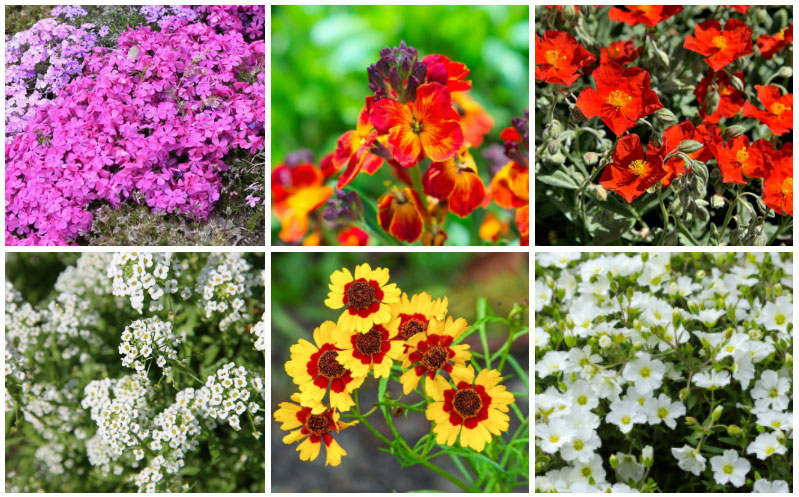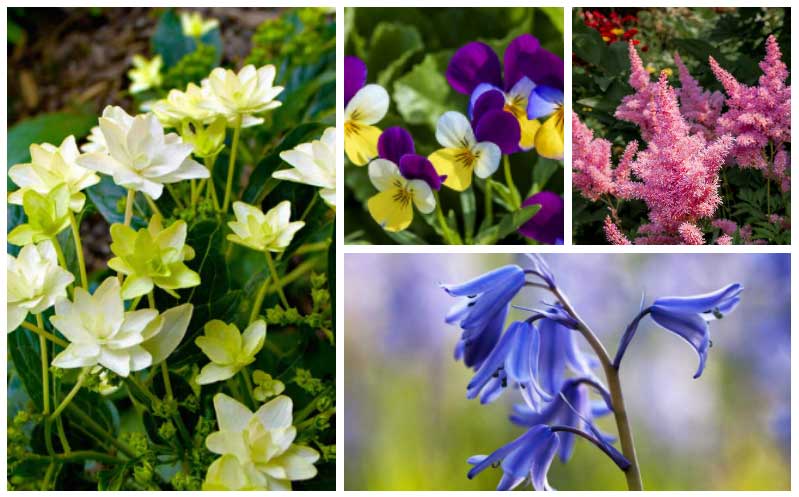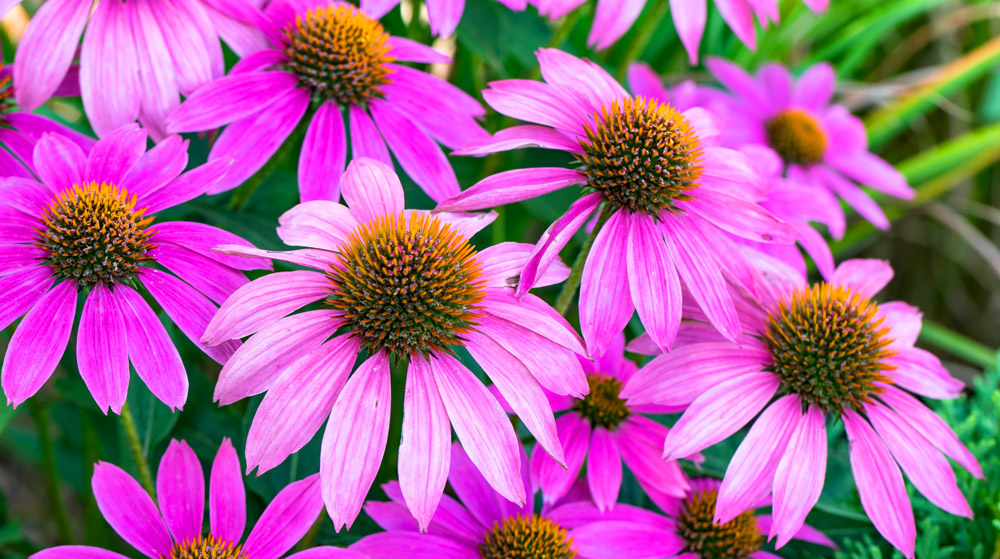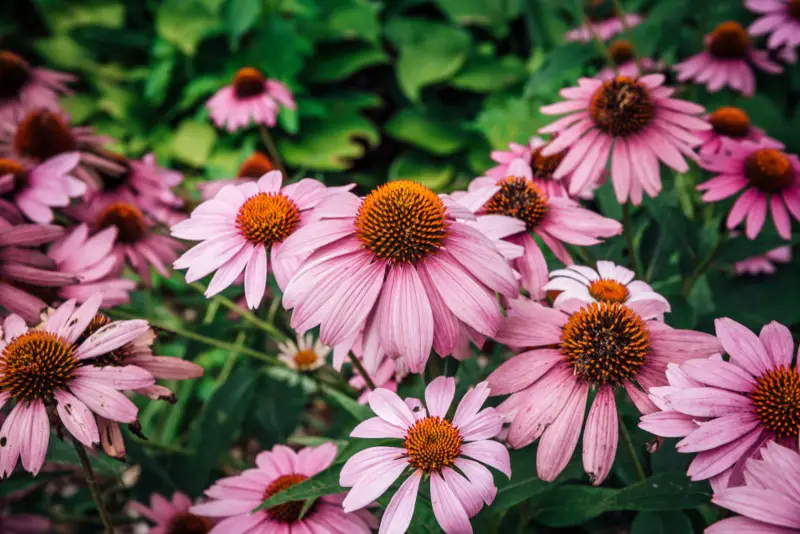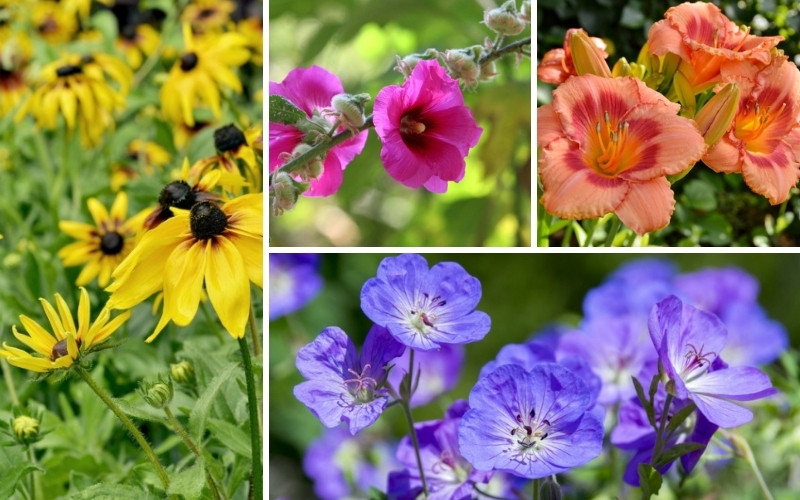
The state of Kansas encompasses USDA plant hardiness zones 5b to 7a making it suitable for a range of hardy perennials. While not all perennials that thrive in zone 7 will survive in the winter in zone 5, there are plenty of perennials that will thrive throughout Kansas.
Consider these hardy perennials to bring color to your Kansas perennial bed this summer.
Tickseed (Coreopsis verticillata ‘Moonbeam’)
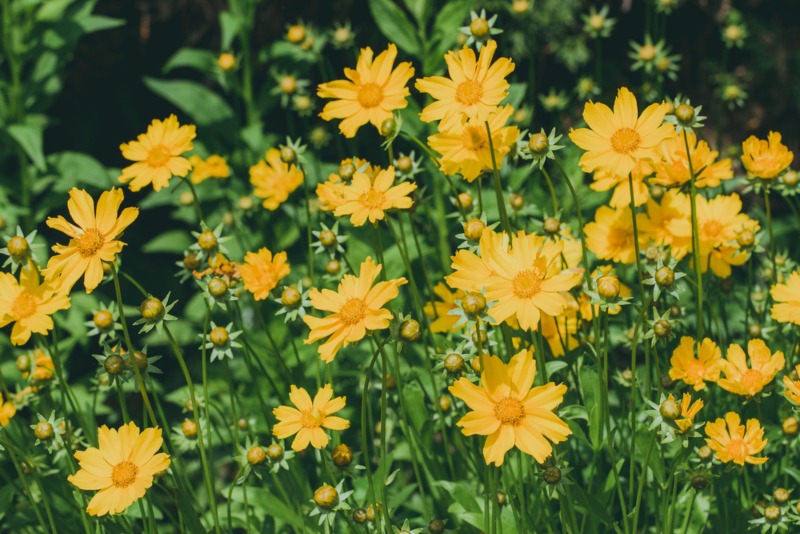
Like other varieties of Coreopsis, ‘Moonbeam’ is a long blooming flower that brings the garden alive with color from early summer through the fall. Its pale yellow flowers resemble daisies with more rounded edges. They grow to heights of 18 to 24 inches with an equal spread. This variety of coreopsis produces sterile seeds so you don’t need to worry about reseeding and taking over the garden. New shoots emerge from the roots the following season. ‘Moonbeam’ is tolerant of a wide range of soils and even tolerates drought well. It is hardy in USDA plant hardiness zones 3 through 9.
Cranesbill Geranium (Geranium sanguineum)
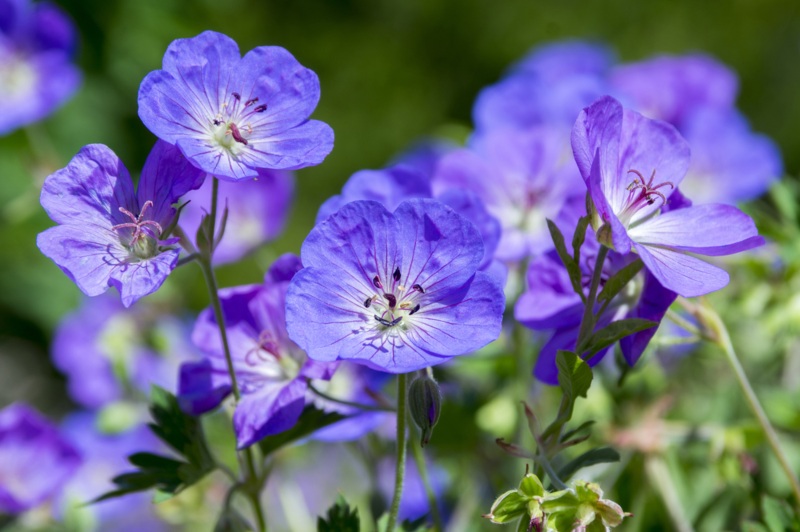
Also known as a hardy geranium this lovely little plant produces small pink flowers atop mounding lanced foliage. It reaches heights of 1 to 2 feet with an equal spread. It blooms in late spring for several weeks, but the foliage remains green all summer. It prefers full sun but will benefit from some afternoon shade. It prefers humus-rich, well-drained soil, but will tolerate average to poor soil and even tolerates drought. It is hardy in USDA plant hardiness zones 3 through 9.
Coneflowers (Echinacea spp.)
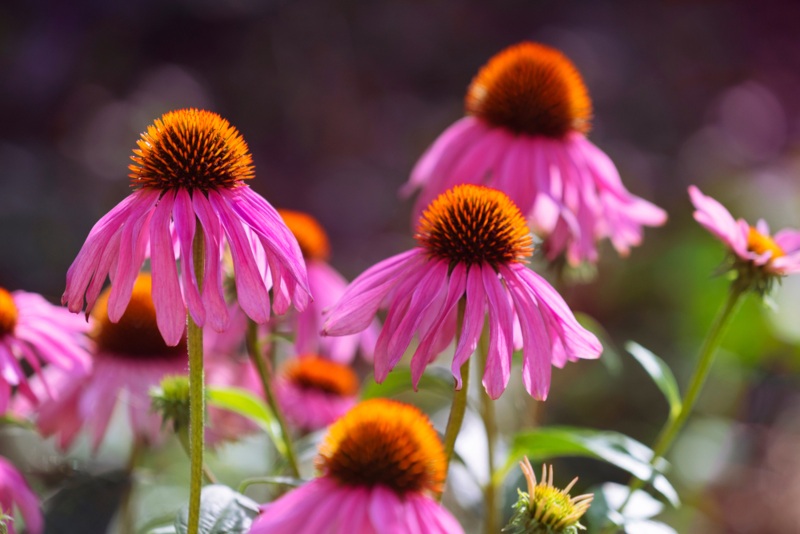
These hardy flowers make a big statement in the flowerbed as they produce large, daisy-like blooms with a contrasting cone in the center. While purple is the most widely known and grown, there are some lovely cultivars in shades of pink, white, yellow and even some rich oranges, rust and bronze varieties. Coneflowers grow to heights of 2 to 4 feet and prefer full sun. They are tolerant of poor or sandy soil, but do best in humus-rich, well-drained soil. They are hardy in USDA plant hardiness zones 3 through 9.
Russian Sage (Perovskia atriplicifolia)
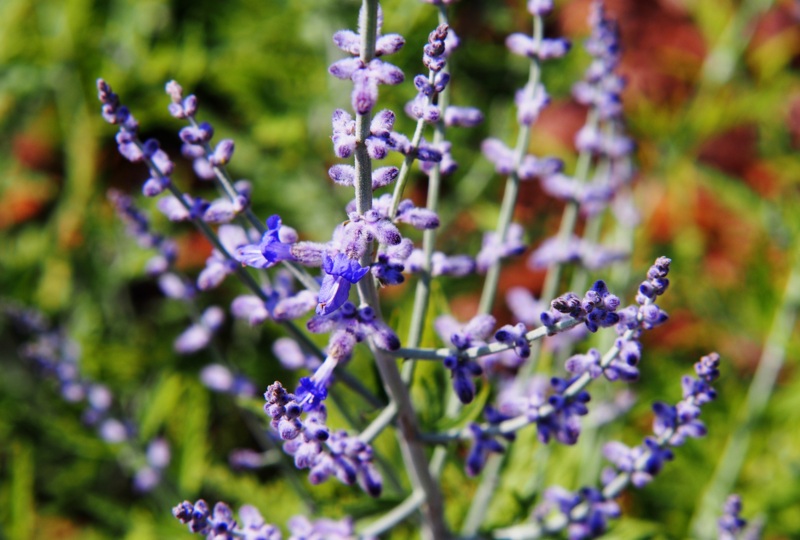
Russian sage makes an excellent specimen plant in the perennial bed as it produces arching branches lined with delicate purple or blue flowers from early summer until fall. Its foliage is gray-green reminiscent of lavender. It releases a distinct herbal scent and attracts bees and butterflies. It grows to heights of 2 to 3 feet, but does take several years to reach its mature size. It prefers full sun and grows in average, well-drained soil. It is hardy in USDA plant hardiness zones 4 through 9.
Rudbeckia (Rudbeckia spp.)
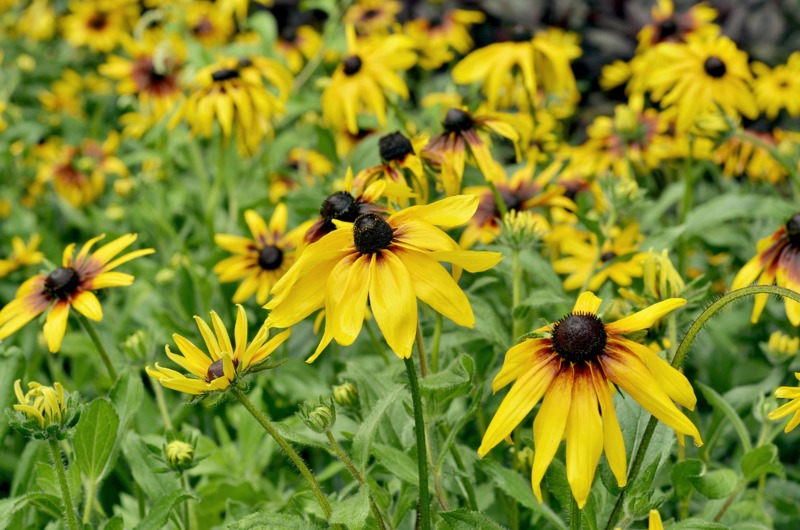
The most recognizable rudbeckia is the black-eyed Susan with its orange-yellow petals and dark centers, but that isn’t the only choice you have when you choose rudbeckia for your perennial bed. These delightful flowers come in a range of colors from lovely orange and yellow with a distinct green eye to a variety of warm autumn colors. Rudbeckia grows to heights of 2 to 4 feet and prefers full sun to partial shade. It thrives in average, well-drained soil but will tolerate poor or sandy soil, too. Rudbeckia is hardy in USDA plant hardiness zones 4 through 8, depending on the cultivar.
Daylily (Hererocallis spp.)
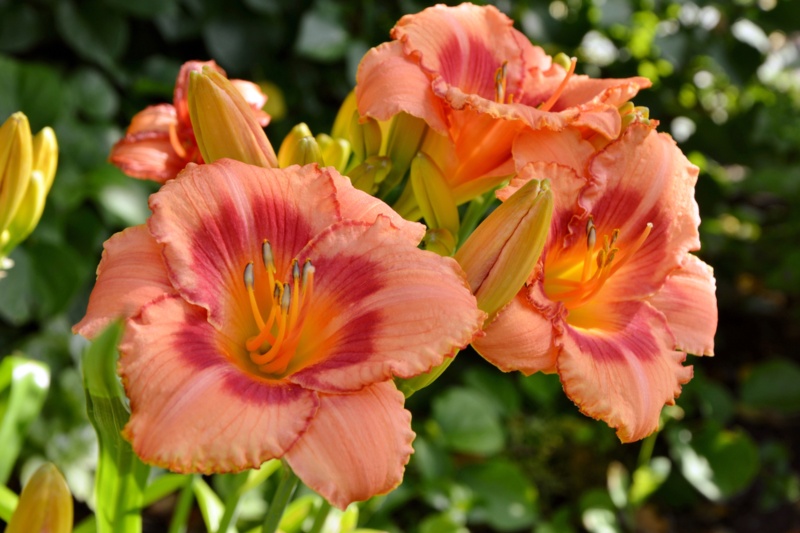
Daylilies can’t be beat for long-lasting color in the perennial bed, especially if you plant early, mid and late-season bloomers. These plants are as tough as they are beautiful and will last for years in your flowerbed. Each trumpet-shaped bloom only lasts a day, but your guests would never guess as the plant produces masses of new buds that open daily. Colors range from yellow and orange to amazing shades of pink and red with many bicolors, too. Daylilies range in height from tiny 8-inch varieties to those that grow to 5 feet in height. They prefer full sun to partial shade and like average, well-drained soil. Daylilies are hardy in USDA plant hardiness zones 4 through 9.
Poppy Mallow (Callirhoe involucrata)
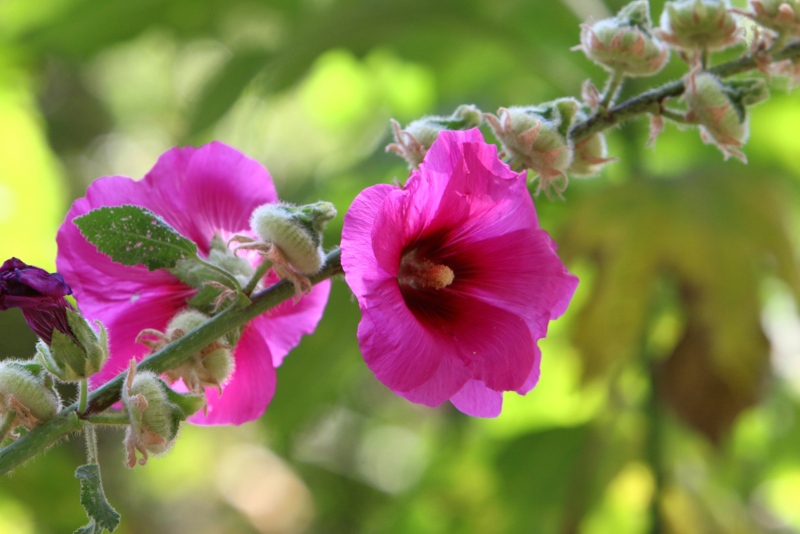
The poppy mallow is native to Kansas making it a natural in the perennial bed. This showy plant produces masses of purple challis-like blooms earning its common name of ‘wine cups’. The crawling vines reach lengths of 3 feet forming a mass of foliage a foot high. This plant blooms all summer and into the fall. It prefers full sun to partial shade and thrives in nearly any soil. It is hardy in USDA plant hardiness zones 4 through 8.
Peonies (Paeonia spp.)
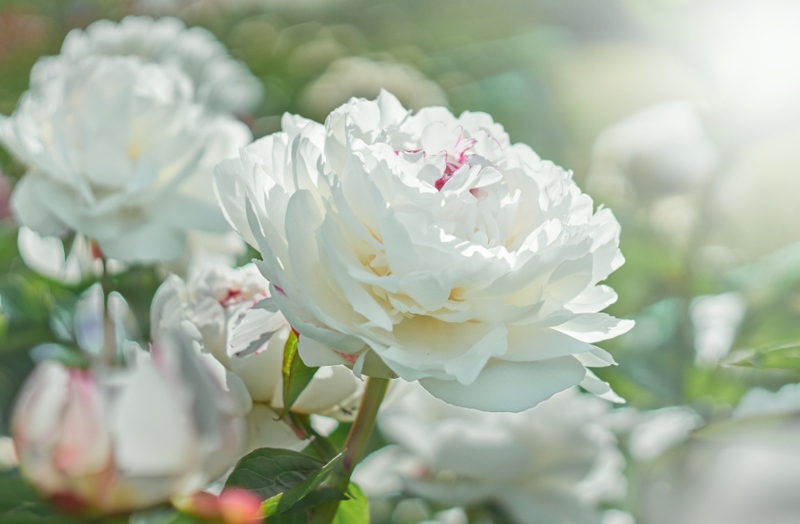
For spring color in the flower garden, peonies can’t be beat. These colorful flowers put on a show for 2 weeks or more in late spring after early spring bulbs have faded. The massive flower heads range in color from white and pink to lovely shades of red with many bicolors, too. Flowers may be either single of double petaled. These plants grow to heights of 2 to 4 feet and prefer full sun to partial shade. They are easy-to-grow, but do require staking to support the weight of the massive blooms. They grow well in average, well-drained soil and are hardy in USDA plant hardiness zones 3 through 8.
See our Peonies growing guide here, for more growing tips.
Hostas (Hosta spp.)
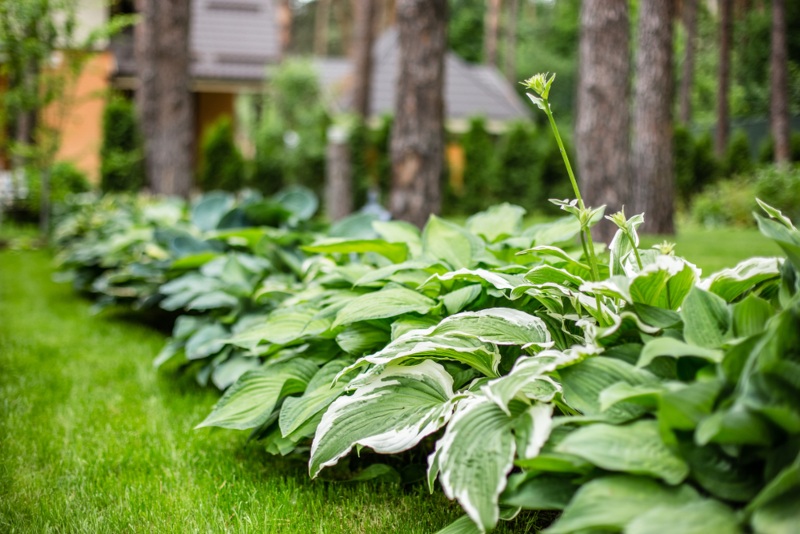
Hostas provide an attractive backdrop for nearly any flower as they are prized for their striking foliage in shades of green, blue-green and white. While some are solid colors, others are edged with dazzling white adding color and texture to your flower bed. Their size ranges from12 inch plants to those that reach a height of 5 feet, depending on the cultivar. Hostas prefer partial shade, but will grow in full sun, especially if provided with some afternoon shade. They are hardy in USDA plant hardiness zones 3 through 9.
Hardy Hibiscus (Hibiscus spp.)
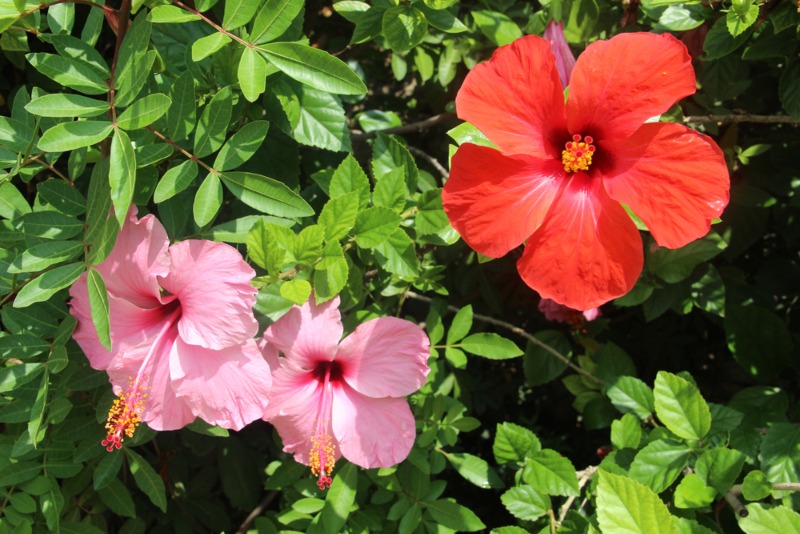
While many hibiscus flowers grow in tropical or semi-tropical regions, the hardy hibiscus can be grown successfully in a Kansas perennial bed. It produces papery blooms that range in color from white and pink to a marvelous shade of red. Blooms may reach a size of 10 inches in diameter. They grow to heights of 3 to 5 feet and bloom for several weeks in midsummer.It prefers full to partial sun and grows well in average, well-drained soil. It is hardy in USDA plant hardiness zones 4 through 9.
Conclusion
While the perennials above should perform well in your Kansas perennial bed, bear in mind that there can be differences in hardiness and growing needs between cultivars of the same species. Always check the plant identification label to be sure the variety you are buying will thrive in your location. Alternately, observe what grows well in your neighborhood and choose perennials that you know will thrive.





